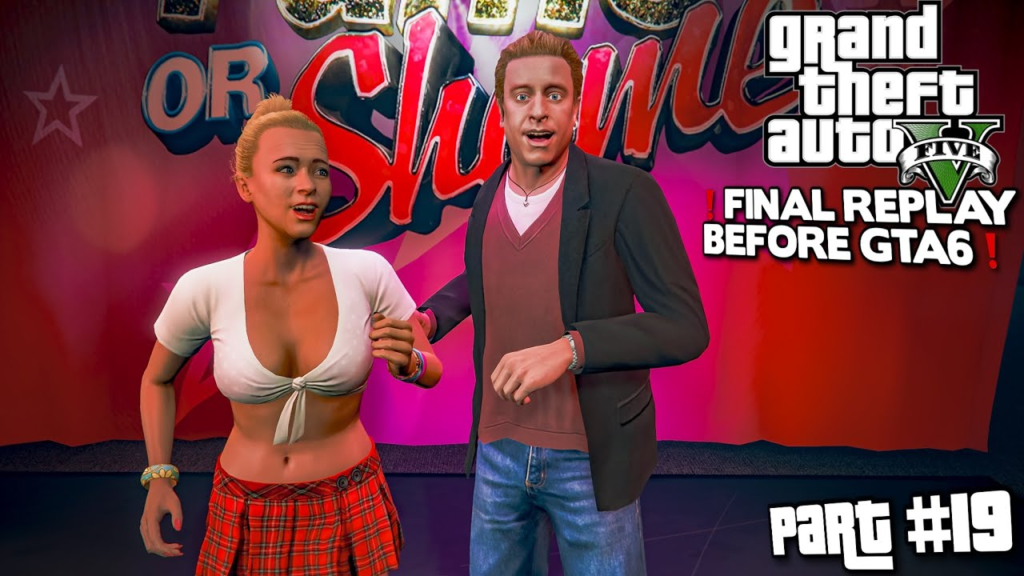GTA Vice City game Introduction
GTA 5 Vice City Game Released in 2005 for the PlayStation Portable (PSP) and later ported to PlayStation 2, Grand Theft Auto: Liberty City Stories (GTA: LCS) is an action-adventure game developed by Rockstar Leeds and Rockstar North. It serves as a prequel to Grand Theft Auto III and takes place in Liberty City, a fictional city inspired by New York City. As part of the Grand Theft Auto franchise, Liberty City Stories presents a familiar open-world gameplay style, but it also introduces several innovations, including a more detailed narrative and a unique portable experience.
This essay aims to analyze various aspects of Liberty City Stories, including its gameplay mechanics, narrative structure, character development, and its place within the broader Grand Theft Auto series. We will also explore its technological innovations and how the game’s setting and themes contribute to the overall gaming experience.
Gameplay Mechanics
Liberty City Stories adheres to the core mechanics of the Grand Theft Auto series, characterized by open-world exploration, vehicular action, and a blend of missions ranging from story-driven tasks to side activities. The game takes place in a large, fully explorable city that is divided into several districts, each with its own distinctive aesthetic and atmosphere. The core gameplay revolves around completing missions for various factions while navigating the criminal underworld. The game’s third-person perspective allows players to control protagonist Toni Cipriani, an Italian-American mobster seeking to rise through the ranks of Liberty City’s criminal organizations.
The open-world design gives players significant freedom, enabling them to explore the city, steal cars, engage in random criminal activities, or simply enjoy the urban landscape. The mission structure is varied, including both story missions and side objectives such as car chases, vigilante missions, and collecting hidden items scattered throughout the city. Players can interact with pedestrians, engage in gunfights, and use a range of vehicles, from motorcycles to boats, further enhancing the sense of freedom.
GTA Vice City Game The combat system in Liberty City Stories offers a refined experience compared to previous games in the series. The introduction of a more fluid lock-on targeting system for gunfights and more responsive vehicle controls made it easier for players to engage in combat and navigate the city. These improvements were critical for the success of the game on a portable platform like the PSP, where controls and screen size limitations presented unique challenges.

The game’s world feels alive and reactive, with pedestrians and NPCs offering dynamic responses based on player actions. The addition of a more intricate radio system, featuring various music stations and talk shows, enriched the atmosphere, making it feel like a real city. The radio stations also play a key role in immersing the player in the world, offering a diverse mix of music, humor, and commentary, which has become a trademark of the Grand Theft Auto franchise.
Narrative and Characters
One of the standout features of Liberty City Stories is its narrative. The game serves as a prequel to Grand Theft Auto III, providing backstory to characters and events that are referenced in that game. Set in 1998, it follows Toni Cipriani, a character who was mentioned in GTA III but not directly playable. Toni returns to Liberty City after a period of exile following a botched hit ordered by his family’s mob boss. As Toni re-establishes himself within the criminal world, he navigates betrayal, family politics, and power struggles.
The story focuses heavily on themes of loyalty, revenge, and ambition. Toni’s journey is shaped by his interactions with various factions, including his own family, rival gangs, and corrupt officials. His relationships with these characters evolve over the course of the game, with some becoming allies while others serve as antagonists. This constant tension and shifting loyalties create a compelling narrative that drives the gameplay forward.
In addition to Toni, the game introduces a number of memorable characters. Salvatore Leone, the leader of the Leone crime family, plays a pivotal role in the story, as do other key figures like Maria, the volatile woman Toni has a complicated relationship with. The game’s characters are well-developed and nuanced, with motivations and personalities that add depth to the narrative. This complex character development allows players to engage more deeply with the storyline, encouraging them to care about the outcomes of missions and the fates of various characters.
GTA Vice City Game The storytelling in Liberty City Stories is cinematic, with cutscenes and dialogue delivered in a way that feels immersive. While the game retains the satirical humor and dark undertones characteristic of the Grand Theft Auto series, it also provides a more personal and grounded story than other entries. The exploration of Toni’s personal growth and his attempts to carve out his own path in the violent world of organized crime adds an emotional layer to the game that distinguishes it from other open-world titles.

Technological and Design Innovations
Given that Liberty City Stories was originally developed for the PlayStation Portable, much of the game’s design was tailored to take advantage of the handheld’s hardware limitations. One of the most notable achievements is the game’s ability to replicate the sprawling, dense city environment of Liberty City, which had previously been confined to console versions. The developers optimized the game’s graphics to make it visually appealing on the smaller PSP screen while maintaining the open-world experience. Although the visual quality does not quite match that of console versions, the game still manages to impress with its attention to detail, creating a believable urban environment.
The game’s controls were also adapted for the PSP’s limited buttons. The use of a simplified control scheme helped make the game more accessible, although it still retained enough depth to satisfy long-time fans of the series. This adaptation was critical in ensuring the game could be played efficiently and comfortably on a handheld system. The experience of driving, shooting, and navigating the city was streamlined, while still allowing for the chaos and excitement that players had come to expect from the Grand Theft Auto series.
GTA Vice City Game Another technological achievement was the implementation of a robust radio system, which was critical to maintaining the immersive atmosphere of the game. The radio stations in Liberty City Stories feature an eclectic mix of music, talk shows, and advertisements, capturing the satirical spirit of the series while offering variety for players. This feature not only enhanced the gaming experience but also set a standard for future open-world games.

Cultural Impact and Legacy
Liberty City Stories is often regarded as a key moment in the evolution of the Grand Theft Auto series. It not only served as a critical bridge between Grand Theft Auto III and Grand Theft Auto: Vice City, but also helped define what was possible in handheld gaming. The game showcased the potential for delivering full-fledged open-world experiences on portable platforms, paving the way for later titles like Grand Theft Auto: Chinatown Wars and Grand Theft Auto V’s later adaptations.
Furthermore, Liberty City Stories helped solidify the Grand Theft Auto series’ place in popular culture. The game’s irreverent humor, sharp social commentary, and detailed world-building contributed to the franchise’s reputation for pushing boundaries in terms of content, narrative, and gameplay. Like other Grand Theft Auto titles, Liberty City Stories was controversial for its depictions of violence, crime, and adult themes, but it also helped demonstrate the power of video games as a storytelling medium.
The game’s influence extends beyond its initial release. Its success demonstrated the viability of open-world games on handheld consoles, influencing the design of future games in the genre. The ability to craft an immersive, sprawling world that could be explored in bite-sized sessions helped redefine the possibilities of portable gaming.

Conclusion
Grand Theft Auto: Liberty City Stories remains one of the most significant entries in the Grand Theft Auto franchise. Its combination of compelling gameplay mechanics, rich narrative, and technological achievements made it a landmark title for the PlayStation Portable. The game not only provided a deep and satisfying experience for fans of the series but also expanded.
App Link
the possibilities of what handheld games could offer. By continuing the tradition of engaging, satirical storytelling, and delivering a faithful open-world experience, Liberty City Stories cemented its place as a classic in the gaming world, influencing both the Grand Theft Auto series and the open-world genre as a whole.

